Air Operations, Carolines Following heavy air and naval bombardments, US Army ground forces land against light opposition at Angaur Island in the Palau Islands. After 7 US carrier-based F6Fs mistakenly attack US Army ground troops during the afternoon killing 7 and wounding 46, ground-support flight operations over Angaur are temporarily halted.
[  | |   ] ]
Air Operations, CBI
BURMA
- 3 10th Air Force B-25s attack Indaw.
- 8 10th Air Force P-47s attack Bhamo.
- 8 P-47s attack Katha.
- 8 P-47s attack Momauk and Wanling.
CHINA
- 29 308th Heavy Bomb Group B-24s attack Changsha.
- 15 341st Medium Bomb Group B-25s and 8 14th Air Force P-51s attack Japanese Army positions at Nanyo.
- 12 B-25s attack Hwangshapu and Kiyang.
- 14th Air Force fighter-bombers conducting armed reconnaissance missions mount more than 130 effective sorties against numerous targets through east-central China.
- 6 10th Air Force B-25s attack Mangshih.
- 3rd CACW Fighter Group P-40s down 2 Ki-43 'Oscar' fighters over Yiyang between 1145 and 1220 hours.
[  | |   ] ]
Air Operations, East Indies - FEAF B-24s, B-25s, and P-38s attack the Langoan airfield on Celebes.
- B-25s and V Fighter Command P-39s attack airfields and occupied villages on Amboina and Ceram through bad weather.
[  | |   ] ]
Air Operations, Europe
RAF BOMBER COMMAND
Daylight Ops:
- 762 aircraft drop more than 3,000 tons of bombs on German positions around Boulogne in preparation for an attack by Allied troops. Included in the aircraft total are 370 Lancasters, 351 Halifaxes and 41 Mosquitos. The German garrison surrenders soon after this attack.
- 1 Halifax and 1 Lancaster are lost.
- In support of Operation MARKET GARDEN, 112 Lancasters and 20 Mosquitos of Nos. 1 and 8 Groups bomb German flak positions in the Flushing area without a loss.
Minor Ops:
- 10 Stirlings and 1 Hudson are on Resistance operations and there are 6 Mosquito patrols and 9 RCM sorties.
Evening Ops:
- In support of Operation MARKET GARDEN, 241 aircraft make 2 diversionary sweeps - 1 to the Dutch coast and 1 into Holland. The intent is to draw up German fighters from southern Holland. The intention is not achieved.
Other Ops:
- 42 Mosquitos are sent to Bremen and 6 to Dortmund, and there are 29 Mosquito patrols and 29 RCM sorties.
US 8th AIR FORCE
ENGLAND:
- 72 8th Air Force B-17s and 59 P-51s return to England from Italy on the last leg of the third 8th Air Force FRANTIC mission. No targets are attacked along the way.
FRANCE:
- 101 8th Air Force B-24s transport fuel supplies to France.
GERMANY:
- VIII Fighter Command pilots down 7 Luftwaffe fighters over Germany at 1345 hours.
NETHERLANDS:
- In support of Operation MARKET, 821 8th Air Force B-17s and 503 VIII Fighter Command fighters and fighter-bombers attack flak batteries, airfields, and other military targets along the troop-carrier routes.
- 16 USAAF fighters are lost
US 9th AIR FORCE
ETO:
- During the night, specially equipped, bomb-armed 474th Fighter Group P-38s fly night-intruder missions against German Army supply columns.
FRANCE:
- XIX TAC fighter-bombers attack targets in the Brest area.
NETHERLANDS:
- Operation MARKET-GARDEN begins with parachute and glider landings (MARKET) by one British and two American airborne divisions of the 1st Allied Airborne Army. IX Troop Carrier Command transports and tow planes are responsible for conveying many of the airborne troops to the targets.
US 12th AIR FORCE
ITALY:
- 12th Air Force B-25s attack German Army troop concentrations near Rimini, in the British 8th Army battle area.
- 12th Air Force B-25s and fighter-bombers attack rail bridges in the Po River valley.
- XII Fighter Command fighter-bombers attack all manner of road and rail transportation targets.
US 15th AIR FORCE
CZECHOSLOVAKIA:
- 2 15th Air Force B-17s transport wounded USAAF airmen from Czechoslovakia to Italy.
HUNGARY:
- More than 440 15th Air Force B-17s and B-24s attack four marshalling yards and two oil refineries at Budapest.
[  | |   ] ]
Air Operations, New Guinea V Fighter Command P-47s and P-40s attack the airfield at Samate.
[  | |   ] ]
Air Operations, Philippines FEAF B-25s attack the Buayoan airfield on Mindanao.
[  | |   ] ]
Britain, Home Front The 'blackout' ends in Britain. It is replaced by the 'dim-out' allowing diffused car headlights and low street lighting.
[  | |   ] ]
Burma On the British XXXIII Corps front, the 5th Indian Div captures Tuitum.
[  | |   ] ]
Eastern Front Russian forces enter Estonia.
NORTHERN SECTOR
The 3rd Baltic Front attacks around Tartu as they try to drive into the rear of the German Narva Group. During the last week the 2nd Shock Army has been transferred from its positions north of Lake Peipus to the Tartu sector. The 2nd attacks alongside the 42nd and 67th Armies, and after bitter fighting breaks through the 18th Army defenses.
[  | |   ] ]
Italy In the western sector the American IV Corps opens a general attack on the left flank.
[  | |   ] ]
Morotai The US 31st Inf Div begins mopping up the island and occupies the islets off the coast.
[  ] ]
Pacific - The US submarine Barb (SS-220) sinks the Japanese tanker Asuza Maru (11,177t) about 230 miles southeast of Hong Kong. Barb and the US submarine Queenfish (SS-393) pick up an additional 15 British and Australian POWs, survivors to the sunken Rakuyo Maru.
- The Japanese merchant cargo ship Shinai Maru (2410t) is sunk by a mine off the east coast of Celebes.
[  | |   ] ]
Palaus Gen Paul J. Mueller's US 81st Inf Div lands on Angaur. The Japanese garrison is about 1,600 strong. Resistance to the landings immediately and later during the first night is energetic but neither very powerful nor effective.
During the morning, with all the south of the island captured, including Peleliu airfield, the 1st and 5th Marines mount attacks from southwest and southeast on the southern spurs of the highly fortified Mount Umurbrogol in the center of the island, but are halted with heavy losses after taking one or two pill-boxes. The heavy guns of the battleship Mississippi (BB-41) are brought into action, successfully bombarding the Japanese positions.
At 8:30a.m. a regiment of the US 322 Inf Div lands on the east coast of the little island of Angaur, south of Peleliu. Japanese resistance is not great and the landing force makes good progress. Japanese counterattacks during the night fail.
There are Japanese attacks by night but by day the Americans still hold most of the south side of Peleliu comfortably enough. They begin attacks on the Japanese positions here dispite the support from heavy naval guns because of the strength and elaboration of the Japanese defenses.
[  | |   ] ]
Western Front Operation MARKET GARDEN is begun. The Allied plan has as its chief proponent Gen Montgomery and is for airborne troops to seize a series of bridges over river and canal lines in Holland allowing the main Allied forces, or part of them, to continue their advance into Germany unimpeded by such natural barriers.
The belief is that the German armies in the west have been so decisively weakened by the battles since D-Day that they will collapse if momentum can be sustained. In fact the German forces in Holland generally and especially around the Arnhem area in particular are not as weak as has been believed. It is indeed arguable that the effort put into MARKET GARDEN would have been better spent in clearing the Scheldt estuary and getting Antwerp working to create a solid basis for the future Allied campaigns.
In detail the plan provides for 3 airborne divs to be dropped and 5 main bridges to be captured while the British XXX Corps attacks north to link up with each division in turn. The nearest bridges, over canals north of Eindhoven at Veghel and Zon, are the objectives of the US 82nd Airborne Div. These objectives are taken on the first day. The US 101st Airborne Div is dropped around Grave south of Nijmegen with the task of taking the bridges over the Maas at Grave and the Waal at Nijmegen. The first of these is taken on the first day. The farthest bridge is at Arnhem over the lower Rhine. This is the objective of the British 1st Airborne Div. They are dropped deliberately a little distance away from the town to allow some organization before going into battle and on balance this proves to have been a mistaken tactic because of the time it gives the German forces to react. It is unfortunate that a SS Pzr Div, recovering from a mauling on the Eastern Front, is close by and is still a very formidable opponent. The airborne troops, of course, have only weapons light enough to be carried in gliders. One battalion manages to reach the bridge but is there cut off from the remainder of the force which is itself fighting for its life. The Germans retain control of one end of the bridge while the parartroops hold the other. Overall the first day of the operation has been fairly successful. All the bridges are still intact but the deciding factor will be whether XXX Corps can advance fast enough to aid the paratroops in the various landing grounds.
As well as the air support for this operation there is a heavy, 3,500 tons, RAF attack on Boulogne before an assault by the Canadian 3rd Div goes in.
[  | |   ] ]
Images from September 17, 1944
Fairford, September 17, 1944
|
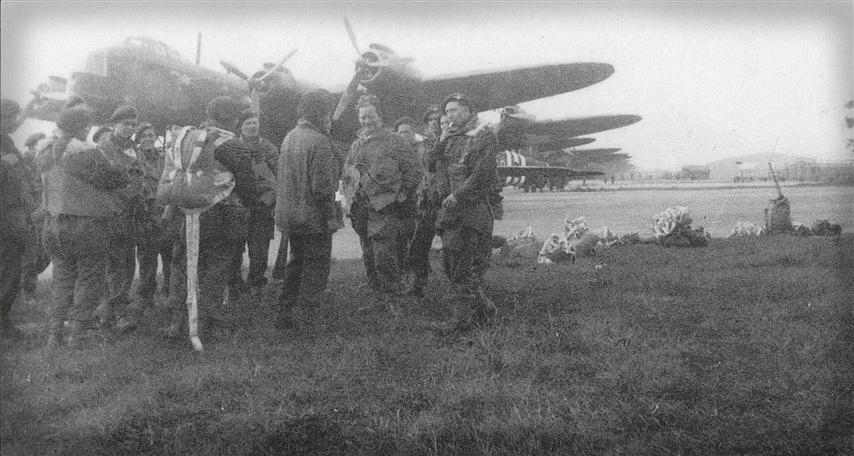 |
|
No. 3 Platoon at Fairford
|
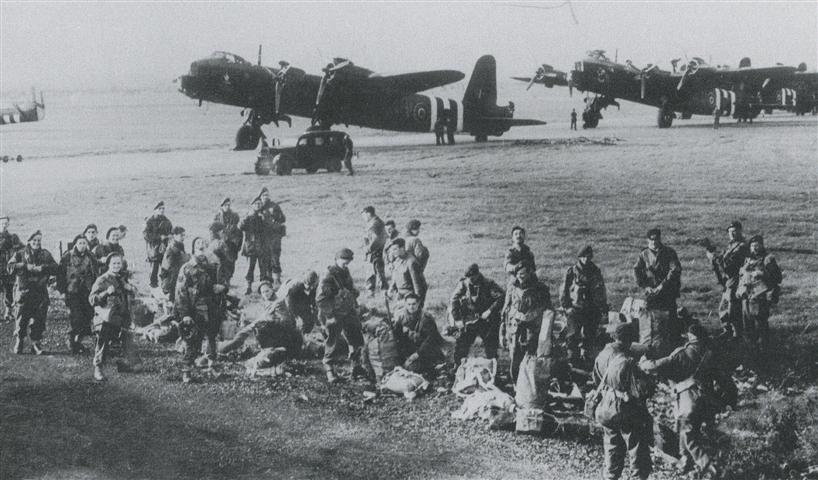 |
|
Landing Zone S
|
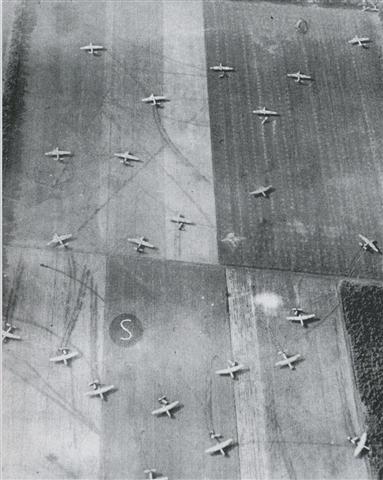 |
|
Paratroopers of the First Allied Airborne Army
|
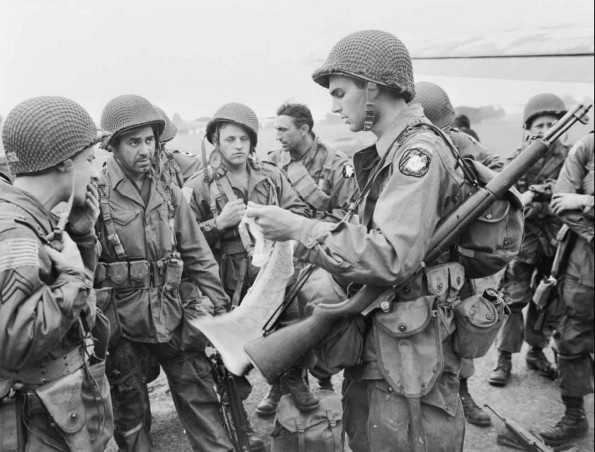 |
|
Inside a C-47 Transport Plane
|
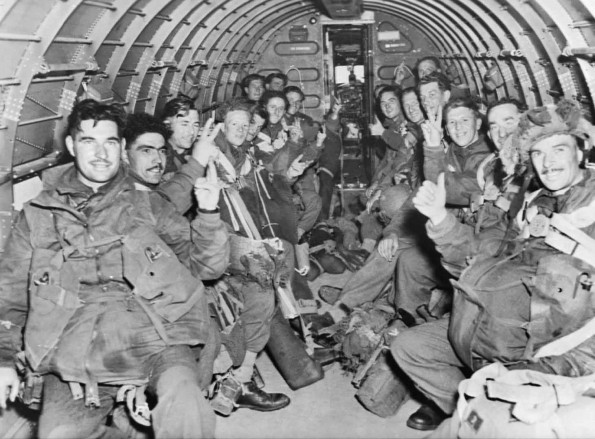 |
|
Flying over Gheel, Belgium
|
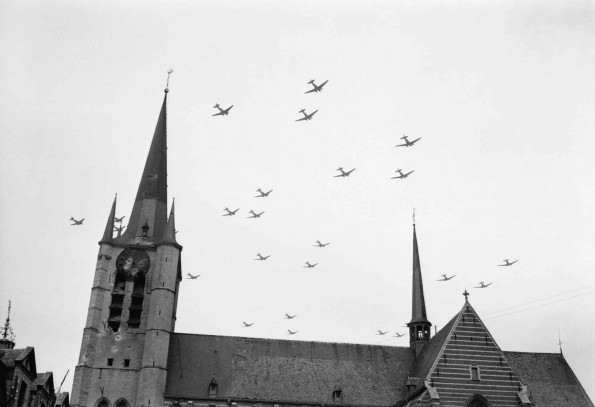 |
|
Men and Supplies Drop
|
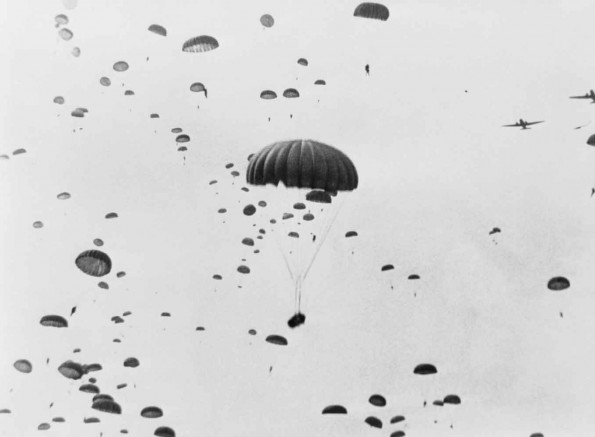 |
|
Dutch Children Greet Paratroopers
|
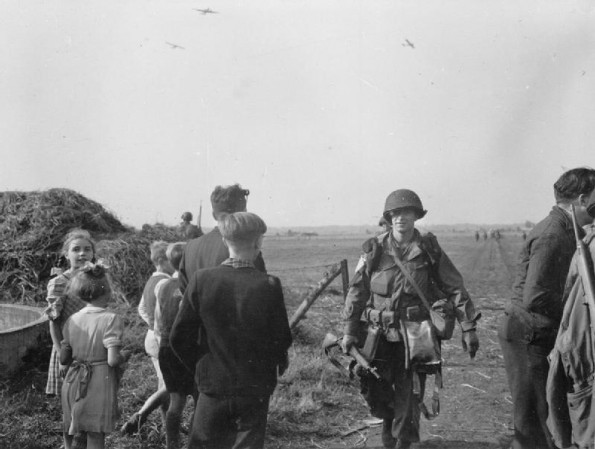 |
|
Gathering Near Arnhem
|
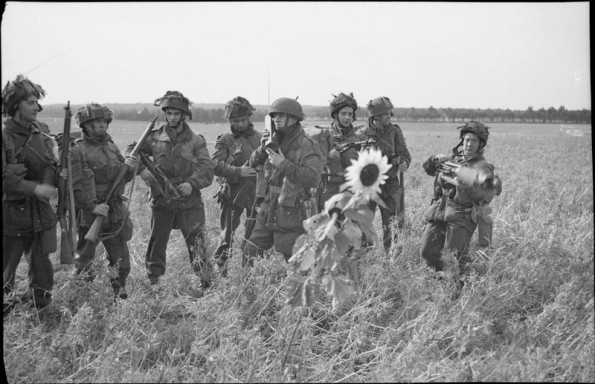 |
|
Unloading a Horsa Glider
|
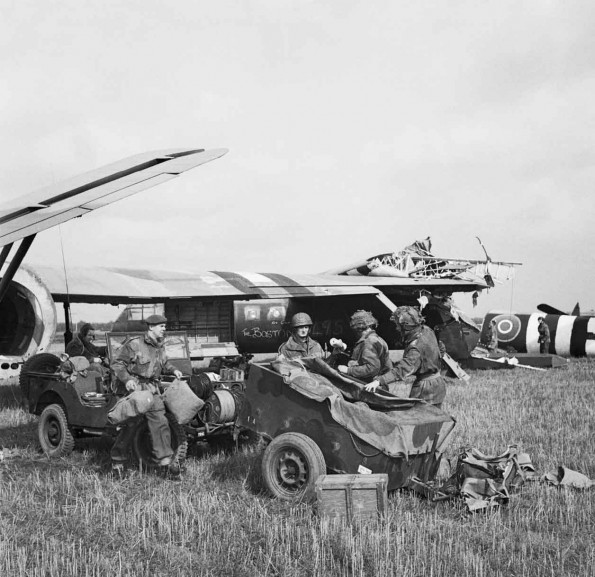 |
|
Ambush Casualty
|
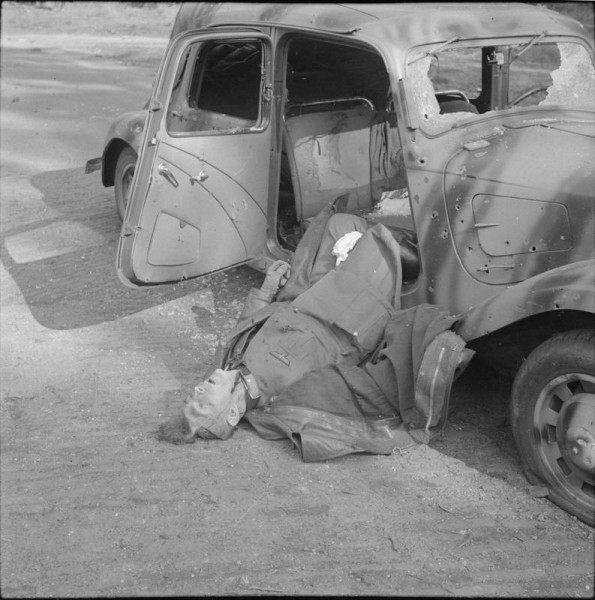 |
|
82nd Airborne Division Dropping
|
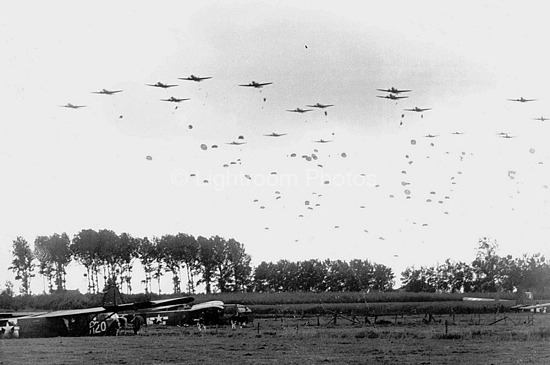 |
|
Irish Guards Sherman Tanks
|
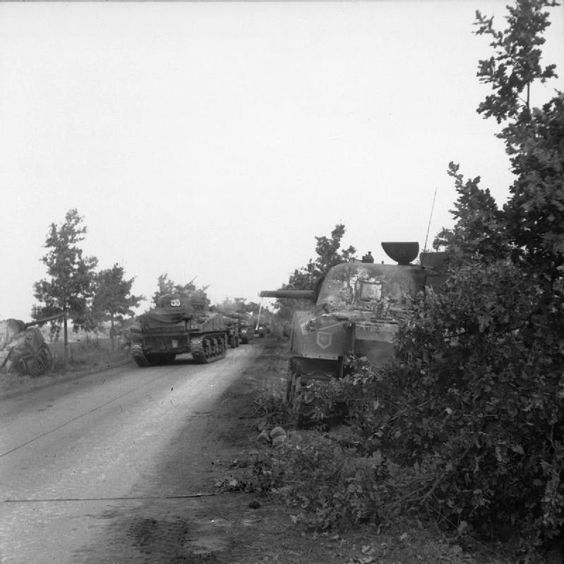 |
|
Airborne Landing near Arnhem
|
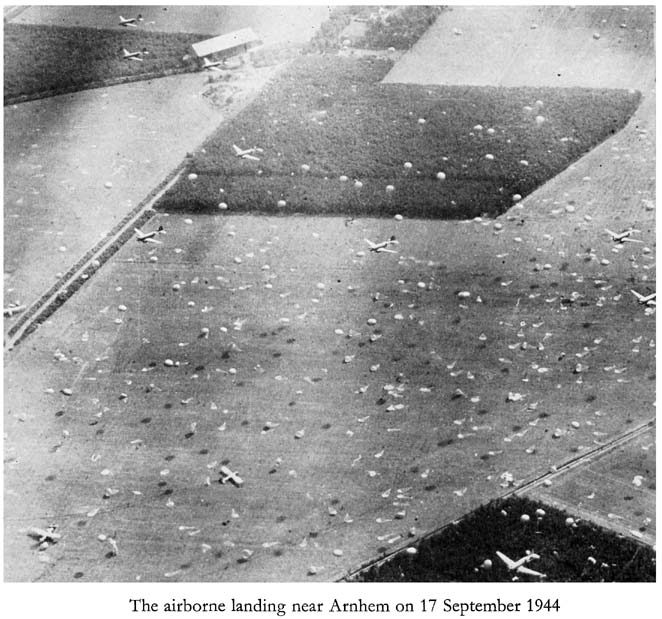 |
|
Preparing to Board
|
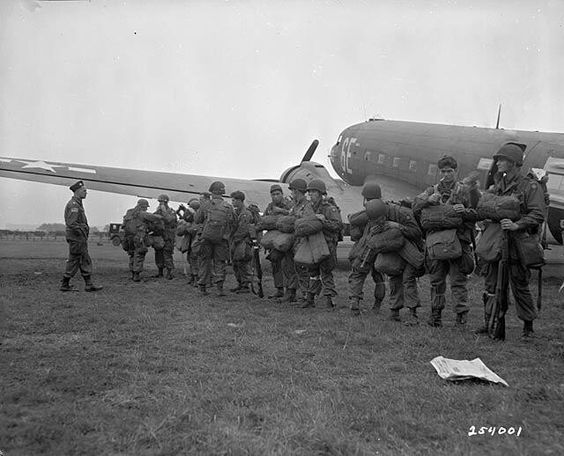 |
|
An Abandoned German PzKpfw IV Tank
|
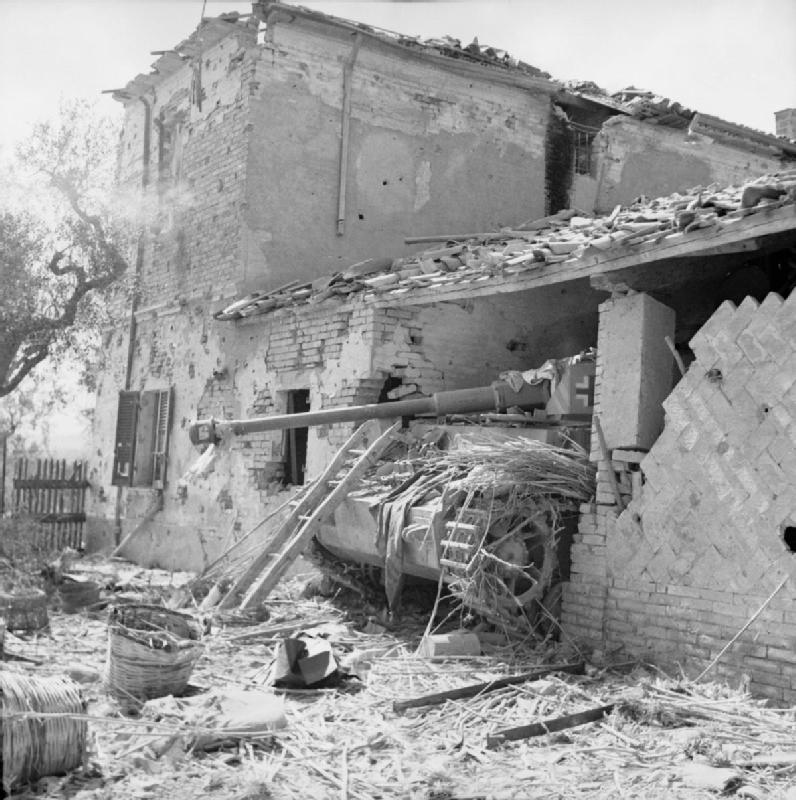 |
|
|















